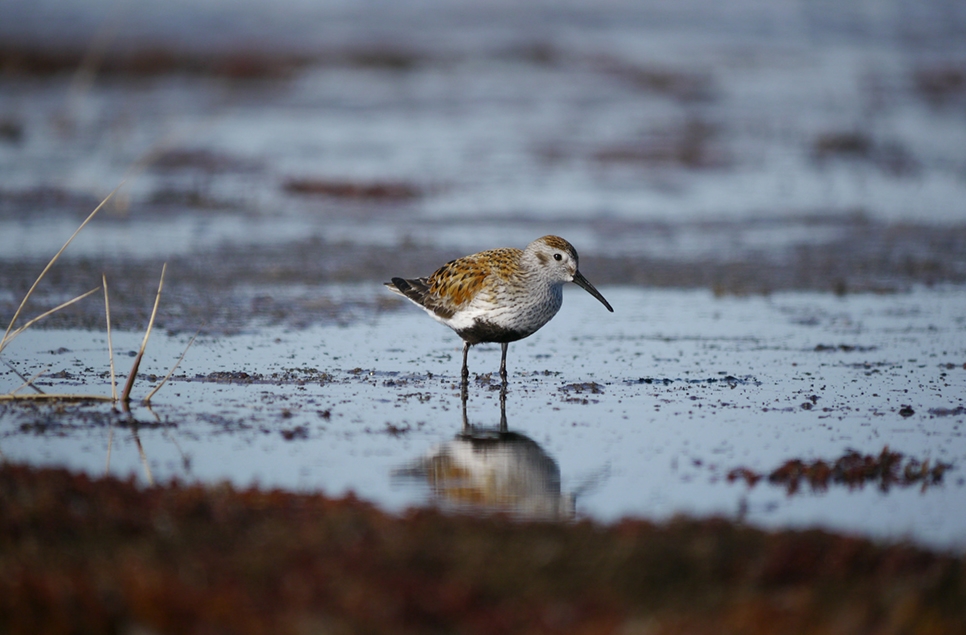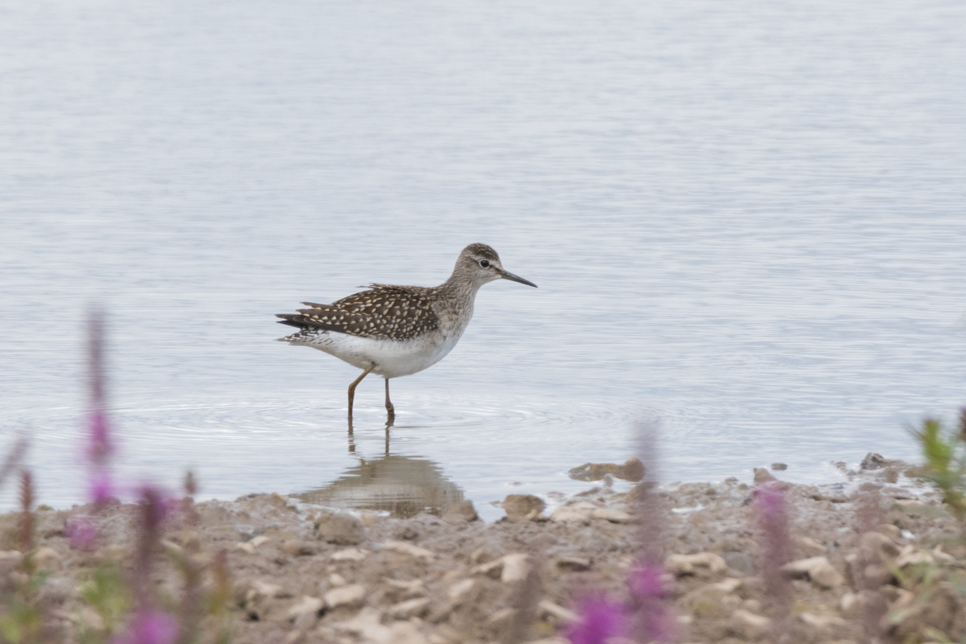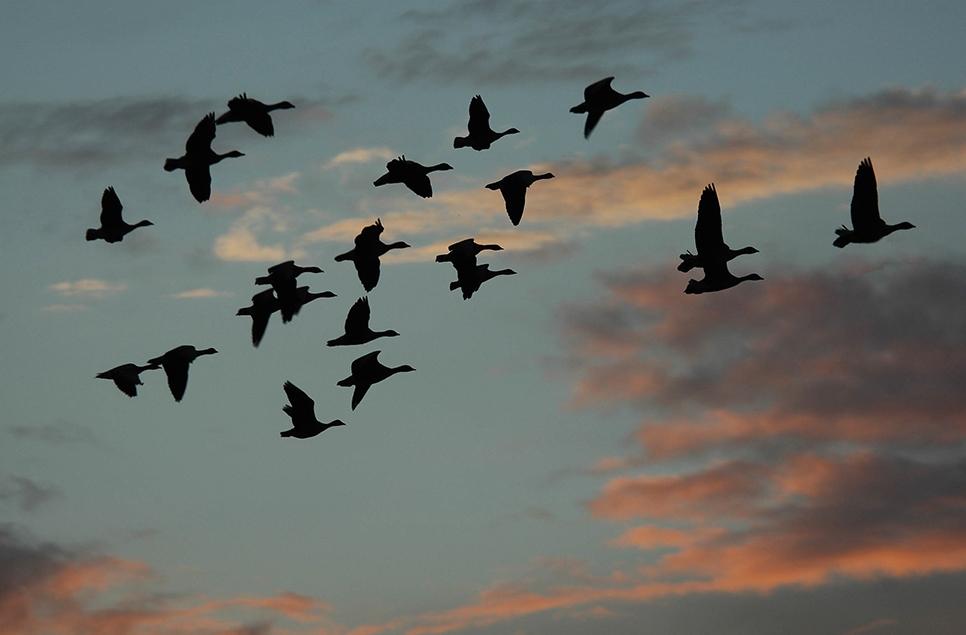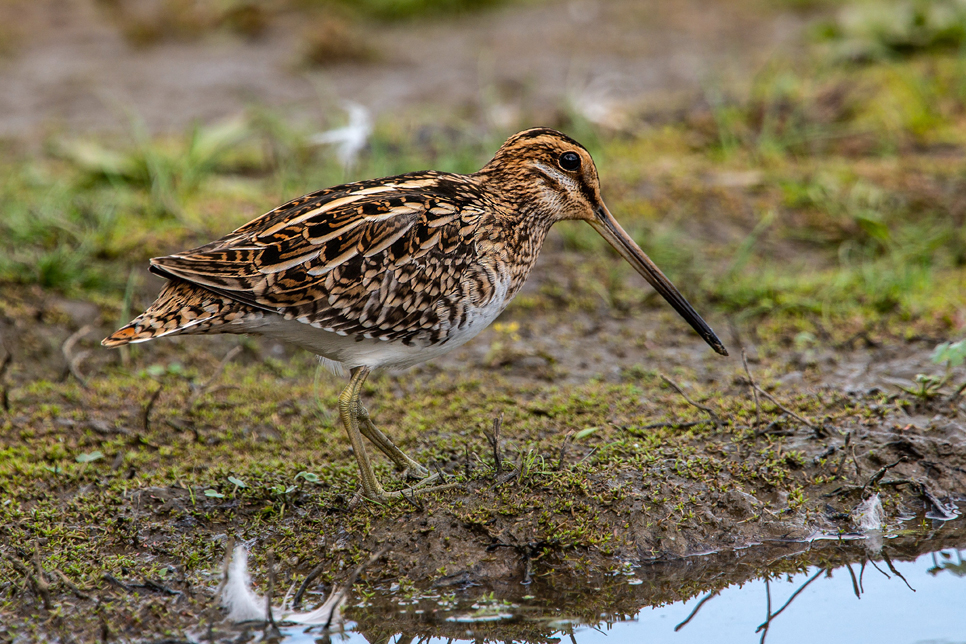Autumn migration is in full swing for many birds
Autumn is a fantastic time to see nature on the move, and our site offers a fantastic opportunity to see many migratory bird species.

Many wetland birds are preparing for the long journey to their winter destinations at this time of year. Our reserve offers the perfect place to rest and refuel overnight or during periods of bad weather.
Many birds take advantage of the lowered water levels of Wader Lake to forage in the mud for food. Birds such as dunlin (pictured below), greenshank and common sandpiper can often be seen around the islands and shorelines of the lake.
Amber-listed wood sandpiper (pictured below) and green sandpiper and are also occasionally spotted feeding on small invertebrates on top of muddy surfaces. They breed in northern Europe, moving to Africa throughout the winter period.
Spotted redshank (pictured below) have also become a more regular visitor at this time of year. Taller than the common redshank, spotted redshank have a more prominent eye stripe, and the top bill is completely black. If you see them in flight, they don't have the white bar on the wing.

Overhead, pink-footed geese (pictured below) begin to move in large numbers in the famous 'v' formation. Their higher-pitched calls help ID them when they're up a height. They can occasionally be spotted on Wader Lake among flocks of greylag or Canada geese. They are notably smaller with shorter necks, pink legs and a pink bill.
Swans are also on the move, with smaller groups of whooper swans (pictured below) often seen flying over site. They occasionally land to rest on Wader Lake, causing great excitement with visitors and staff alike!

Timid common snipe (pictured below by Bill Richmond) are noted regularly in the vegetation around hides or the edges of the lake. If you're lucky, you may see them move into the lake to feed, using their long bill to forage in the mud for worms and small crustaceans.
Ready to visit?
If you've been inspired to explore Washington Wetland Centre, find out more and plan your visit online.
Plan your visit






